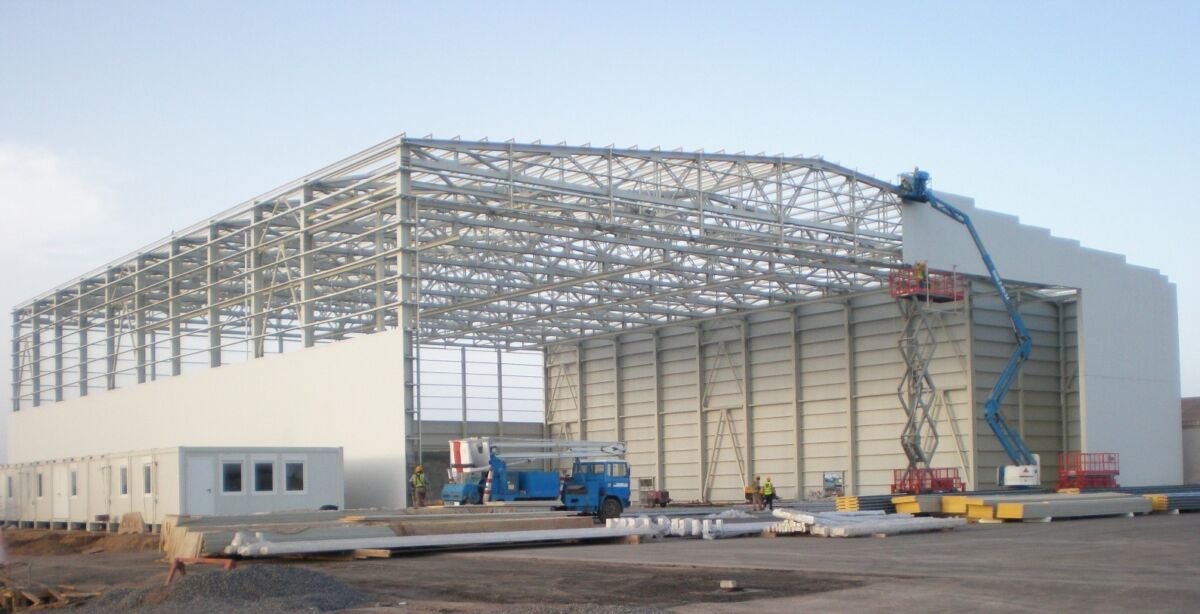The construction industry has evolved significantly with advancements in technology, materials, and sustainable practices. Modern construction techniques focus on improving efficiency, durability, and environmental impact while reducing costs and construction time. These techniques incorporate cutting-edge innovations such as prefabrication, 3D printing, and smart building materials to create more resilient and sustainable structures.
Traditional construction methods are being replaced by modern approaches that enhance productivity, minimize waste, and optimize energy efficiency. From high-rise buildings to residential homes, these innovative techniques provide better structural integrity and long-term cost savings.
This guide explores the latest modern construction techniques, highlighting their benefits and applications. Whether for large-scale commercial projects or eco-friendly residential homes, these advancements are shaping the future of construction.
Prefabrication and Modular Construction
Prefabrication and modular construction involve assembling building components off-site before transporting them to the construction location for final installation. This method improves efficiency, reduces labor costs, and minimizes material waste.
Benefits of Prefabrication
- Faster construction timelines due to off-site manufacturing.
- Reduced labor costs as components are assembled in a controlled environment.
- Lower material waste, making it a more sustainable option.
- Improved quality control and precision compared to traditional on-site methods.
Applications
- Residential housing and apartment buildings.
- Commercial offices and high-rise structures.
- Hospitals, schools, and emergency shelters.
Modular homes, built using this technique, are gaining popularity for their affordability and energy efficiency. These homes can be customized and expanded by adding prefabricated modules.
3D Printing in Construction
3D printing technology is revolutionizing construction by using large-scale printers to create building components layer by layer. This method allows for rapid and cost-effective construction while minimizing human error.
Benefits of 3D Printing:
- Reduced construction time, with entire homes built in days instead of months.
- Cost savings due to lower labor and material expenses.
- Eco-friendly as it reduces material waste and uses sustainable materials like recycled concrete.
- High precision and customization capabilities.
Applications:
- Affordable housing and disaster relief shelters.
- Complex architectural designs that are difficult to achieve with traditional methods.
- Prototypes for new building materials and designs.
Several companies worldwide are now successfully building 3D-printed homes, making housing more accessible and cost-effective in underdeveloped regions.
Smart Building Materials and Self-Healing Concrete
Innovative building materials are enhancing the durability and sustainability of modern structures. Smart materials, such as self-healing concrete and energy-efficient insulation, improve building longevity and reduce maintenance costs.
Benefits of Smart Materials:
- Self-healing concrete repairs cracks using bacteria, extending the lifespan of structures.
- Transparent solar panels generate electricity while allowing natural light.
- Aerogel insulation offers superior thermal efficiency, reducing heating and cooling costs.
- Shape-memory alloys and self-adjusting windows enhance energy efficiency.
Applications:
- Bridges, roads, and tunnels to reduce maintenance needs.
- Energy-efficient homes and commercial buildings.
- Sustainable construction projects aiming for net-zero energy consumption.
Self-healing concrete is particularly useful in infrastructure projects, reducing the need for costly repairs and extending the lifespan of roads and bridges.
Green and Sustainable Construction
Sustainable construction focuses on reducing environmental impact by using energy-efficient designs, eco-friendly materials, and renewable energy sources. Green buildings are designed to be resource-efficient and environmentally friendly.
Benefits of Green Construction:
- Lower energy consumption through efficient insulation and smart lighting.
- Reduced carbon footprint by using recycled and locally sourced materials.
- Healthier indoor environments with improved air quality.
- Increased property value due to sustainability certifications (e.g., LEED certification).
Applications:
- Eco-friendly residential and commercial buildings.
- Green roofs and vertical gardens to improve urban air quality.
- Water conservation systems, such as rainwater harvesting and greywater recycling.
Builders are incorporating sustainable materials such as bamboo, recycled metal, and rammed earth to create homes that require less energy and maintenance.
Advanced Robotics and Automation in Construction
Robotics and automation are transforming construction sites by improving safety, efficiency, and precision. Automated machinery reduces human labor and enhances productivity.
Benefits of Robotics in Construction:
- Increased worker safety by reducing exposure to hazardous tasks.
- Faster project completion with automated bricklaying and excavation.
- Improved accuracy in complex designs through robotic arms and AI-driven machines.
- Lower costs due to reduced labor requirements and faster project timelines.
Applications:
- Robotic bricklayers that place bricks and apply mortar faster than human workers.
- Autonomous drones for surveying, mapping, and monitoring construction progress.
- AI-driven project management tools for better planning and efficiency.
Drones are now widely used to inspect construction sites, improving project oversight and reducing safety risks.
The Bottom Line
Modern construction techniques are revolutionizing the way buildings are designed and built. From prefabrication and 3D printing to smart materials and robotics, these innovations enhance efficiency, sustainability, and affordability.
By incorporating energy-efficient insulation, eco-friendly materials, and automated construction processes, builders can create durable, cost-effective, and environmentally responsible structures. As technology continues to advance, the future of construction will be defined by smarter, greener, and more innovative building methods.
Whether constructing residential homes, commercial buildings, or large infrastructure projects, adopting modern construction techniques ensures better performance, lower costs, and a reduced environmental footprint.
